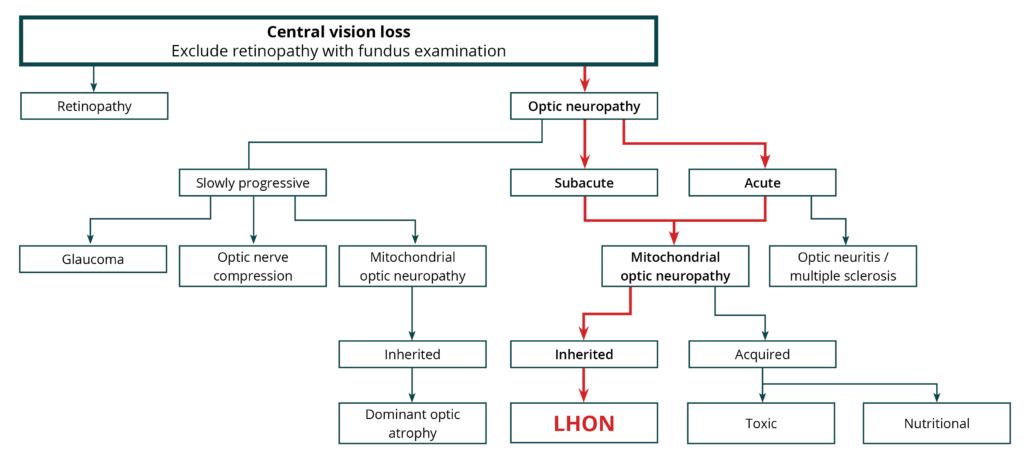Because there is a clear pattern of LHON genetic inheritance, those with a family member on the maternal inheritance bloodline with a LHON mutation should expect that any sudden, painless central vision loss they experience is likely caused by LHON. However, carrying the LHON mutation does not mean that a LHON carrier will lose central vision; most who carry a LHON mutation do not. Only about 50% of men carrying a LHON mutation will lose vision in their lifetime; only about 10% of women will do so.
The most common LHON mutation is the 11778 mutation, accounting for about 60% of all LHON cases. Most of the remaining LHON cases are the 14484 mutation or the 3460 mutation, while about 5-10% are one of several very rare mutations.
Those who are not aware of any family members with LHON are taken by surprise when they suddenly lose central vision. Since LHON is so rare, the medical community usually suspects, tests and treats for other causes of sudden vision loss. An MRI may be conducted to rule out a brain tumor. Since vision loss usually begins in just one eye, the tentative diagnosis of Optic Neuritis is often made and a 3 or 5 day steroid treatment is often prescribed. When vision doesn’t improve and the second eye also begins losing vision, there may be more tests such as a VER (Visual Evoked Response) and a Lumbar Puncture (aka Spinal Tap) to rule out other possible causes of sudden, bilateral vision loss.

